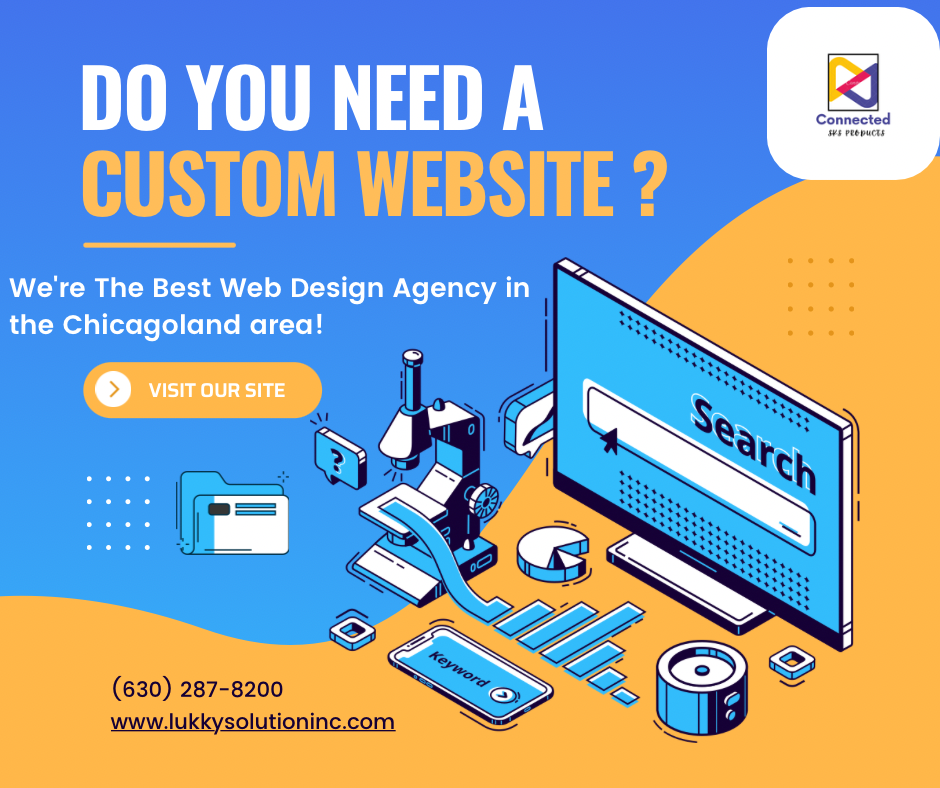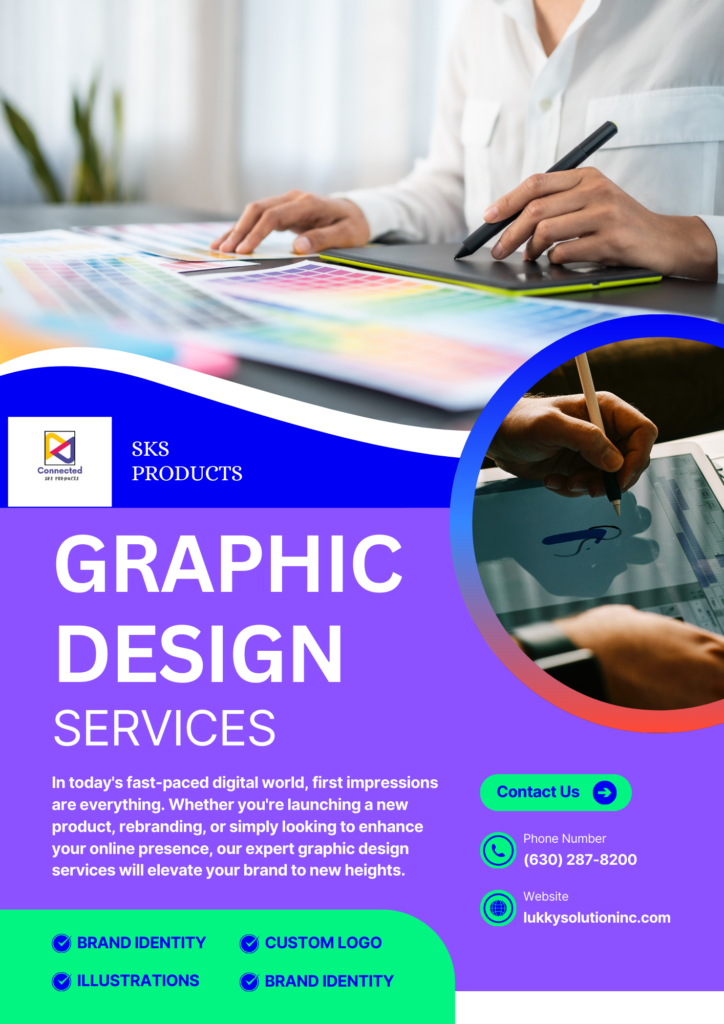Introduction
In today’s digital age, establishing a strong brand identity is crucial for any business aiming to succeed and stand out from the competition. One of the most significant aspects of building this identity lies in professional web design. A well-crafted website is not only a reflection of a company’s ethos but also serves as the primary platform through which potential clients engage with the brand. This article delves into the importance of professional web design in shaping and maintaining brand identity, covering essential components, consistency, user experience, SEO, and the benefits of hiring professional services.
Understanding Brand Identity
Definition of Brand Identity
Brand identity encompasses the visual elements, messaging, and overall perception a brand aims to convey to its audience. It is the unique combination of attributes that sets a brand apart in a crowded marketplace. This includes the brand’s name, logo, color palette, typography, and tone of voice. A strong brand identity not only helps in recognition but also fosters trust and loyalty among consumers.
Moreover, brand identity is essential in creating emotional connections with customers. It influences how consumers perceive a brand and can significantly impact their purchasing decisions. A cohesive and compelling brand identity can lead to increased customer engagement and long-term loyalty.
Components of Brand Identity
Brand identity consists of several key components that work together to create a unified image. The primary components include:
- Logo: The visual symbol of the brand, representing its values and mission.
- Color Palette: Specific colors chosen to convey emotions and associations related to the brand.
- Typography: The font styles and sizes that reflect the brand’s personality.
- Imagery: The visual content used in marketing materials and on the website.
- Voice and Tone: The communication style that reflects the brand’s personality in written content.
Consistent Branding
The Role of Web Design in Brand Consistency
Consistency is vital in establishing a brand identity, as it reinforces recognition and builds trust. Professional web design plays a critical role in maintaining brand consistency across all platforms. A well-designed website adheres to predefined branding guidelines, ensuring that every element—colors, fonts, and images—aligns with the brand’s identity.
When users encounter consistent branding across different touchpoints, such as social media, advertisements, and the website, they are more likely to remember the brand and develop a positive perception. This consistency not only enhances credibility but also fosters a sense of reliability and professionalism.
Logo Design and Its Impact
Logos are the cornerstone of brand identity and are often the first impression consumers have of a brand. A well-designed logo encapsulates the essence of the brand in a simple and memorable visual representation. When integrated seamlessly into web design, the logo helps to anchor the brand’s identity.
Furthermore, the logo’s placement, size, and design should be cohesive with the overall website aesthetics. It’s essential for the logo to be prominent yet harmonious with other design elements, ensuring that brand identity is communicated effectively.
Graphics Design in Strengthening Brand Identity
Beyond logos, graphic design plays a significant role in establishing brand identity. The images, icons, and illustrations used on a website should align with the brand’s values and aesthetics. Professional graphic design enhances visual communication, making the website not only more appealing but also more engaging.
Incorporating custom graphics that reflect the brand’s story can create a more immersive experience for visitors. This personalized touch helps in differentiating the brand from competitors, creating a lasting impression on users.
User Experience
Significance of User Experience in Web Design
User experience (UX) is a critical factor in the success of a website. It encompasses all aspects of the end-user’s interaction with the website, including usability, accessibility, and overall satisfaction. A positive user experience is essential for retaining visitors and encouraging them to engage further with the brand.
Professional web design prioritizes user experience by ensuring that the website is intuitive, responsive, and easy to navigate. This focus on UX not only enhances user satisfaction but also reinforces brand identity by creating a seamless and enjoyable interaction with the brand.
Elements of Effective User Experience
Several elements contribute to effective user experience in web design. These include:
- Navigation: Clear and intuitive navigation allows users to find information quickly and efficiently.
- Responsive Design: A design that adapts to various devices and screen sizes enhances accessibility.
- Loading Speed: Fast-loading websites improve user retention and satisfaction.
- Content Structure: Well-organized content that is easy to read and understand enhances user engagement.
How User Experience Influences Brand Perception
User experience significantly impacts how consumers perceive a brand. A website that is easy to navigate and visually appealing fosters positive emotions, making users more likely to trust the brand. Conversely, a poor user experience can lead to frustration, diminishing the brand’s reputation.
Moreover, user experience can drive brand loyalty. When users have a positive experience on a website, they are more likely to return and recommend the brand to others. Thus, investing in professional web design that prioritizes user experience is essential for cultivating a strong brand identity.
Search Engine Optimization
Connection Between Web Design and SEO
Search engine optimization (SEO) is vital for increasing a website’s visibility and attracting organic traffic. Professional web design plays an integral role in implementing effective SEO strategies. A well-structured website that is optimized for search engines can significantly improve a brand’s online presence.
The design and architecture of a website can affect its search engine rankings. Factors such as site speed, mobile-friendliness, and the use of proper heading tags all contribute to SEO. A professional web designer understands these elements and ensures they are incorporated into the website’s design.
Best Practices for Optimizing Web Design for SEO
To optimize web design for SEO, several best practices should be followed:
- Mobile Optimization: Ensure the website is responsive and performs well on mobile devices.
- Fast Loading Times: Optimize images and scripts to enhance loading speed.
- SEO-Friendly URLs: Use descriptive and concise URLs that include relevant keywords.
- Heading Tags: Utilize proper heading structures to improve readability and SEO.
The Role of Keywords in Web Design
Keywords are essential for SEO, as they connect users with relevant content. Professional web design incorporates keyword strategies into the website’s structure and content. This includes optimizing meta tags, alt texts, and on-page content to align with targeted keywords.
Moreover, a well-organized site hierarchy that reflects keyword themes can improve both user experience and search engine rankings. By integrating keywords effectively, a professional web designer enhances the website’s visibility while maintaining a coherent brand identity.
The Role of Professional Web Design
Benefits of Hiring Professional Web Designers
Hiring professional web designers comes with numerous advantages. Firstly, they possess the expertise and experience to create a website that is visually appealing and functional. Professionals understand the intricacies of design principles, user experience, and SEO, ensuring that all aspects align with the brand identity.
Additionally, professional web designers offer tailored solutions that cater to the specific needs and goals of a business. They can help in creating a unique and innovative design that sets the brand apart from competitors, ultimately enhancing its identity and market presence.
Choosing the Right Web Design Service: SKS Products
When selecting a web design service, it’s essential to consider factors such as portfolio, expertise, and client reviews. SKS Products is a notable example of a service that specializes in professional web design. They have a proven track record of creating visually stunning and user-friendly websites for various industries.
By choosing a service like SKS Products, businesses can ensure they receive a website that not only reflects their brand identity but also meets their functional needs and SEO requirements. This strategic investment is necessary for establishing a strong online presence.
Case Studies of Successful Web Design
Examining case studies of businesses that have excelled due to professional web design can provide valuable insights. Many companies have seen significant increases in traffic and engagement after investing in a professionally designed website. For example, a well-known e-commerce brand revamped its website with a modern design and improved user experience, resulting in a 50% increase in conversions within just three months.
Another case involved a service-oriented business that optimized its web design for SEO and user experience. After redesigning its site, the company experienced a 200% growth in organic traffic and significantly improved customer feedback. These case studies highlight the tangible benefits of investing in professional web design.
Conclusion
Recap of Key Points
In summary, professional web design plays a crucial role in establishing and maintaining brand identity. It encompasses various elements, including consistent branding, user experience, and SEO optimization. By prioritizing these factors, businesses can create a strong online presence that resonates with their target audience.
Investing in professional web design not only enhances visual appeal but also fosters trust, loyalty, and engagement among users. As the digital landscape continues to evolve, businesses must recognize the importance of a well-designed website in achieving their branding and marketing objectives.
Final Thoughts on Web Design and Brand Identity
In conclusion, as the online marketplace becomes increasingly competitive, the need for a robust brand identity reinforced by professional web design cannot be overstated. Brands that successfully integrate these elements stand to benefit from enhanced visibility, customer loyalty, and ultimately, business growth. Companies should approach web design as a strategic investment rather than merely a functional necessity, recognizing its potential to shape their identity and drive success.
FAQs
What is brand identity?
Brand identity is the collection of visual elements and messaging that represents a brand. It includes logos, color palettes, typography, and the overall perception a brand aims to convey.
Why is consistent branding important?
Consistent branding reinforces recognition, builds trust, and fosters loyalty among consumers, making it essential for a brand’s long-term success.
How does user experience impact brand perception?
A positive user experience enhances user satisfaction and encourages trust, leading to a favorable perception of the brand. Conversely, a poor user experience can damage a brand’s reputation.
What are the benefits of hiring professional web designers?
Hiring professional web designers ensures that a website is visually appealing, functional, and aligned with branding and SEO goals. Professionals bring expertise and tailored solutions to meet a business’s needs.
How can SEO improve brand visibility?
SEO improves a website’s visibility in search engine results, increasing organic traffic and allowing potential customers to discover the brand more easily.





